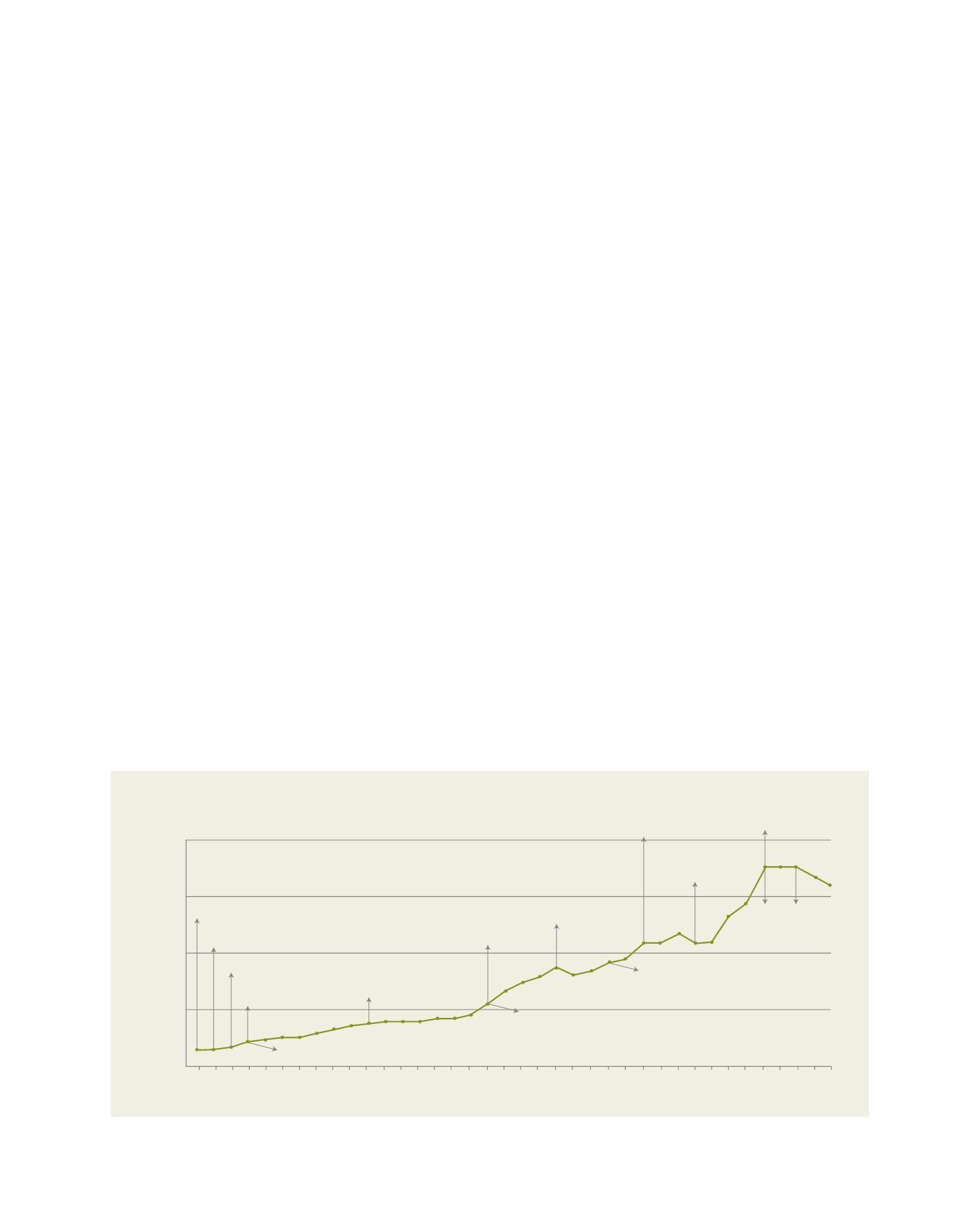

[
] 223
W
ater
C
ooperation
, S
ustainability
and
P
overty
E
radication
Between 1980 and 1990, the Government initi-
ated a number of major groundwater development
projects with the assistance of donor agencies such
as the Kuwait Fund, the Asian Development Bank
and the World Bank. These aid projects provided
additional strong incentives to further increase the
number of tube wells and groundwater extraction,
to meet increasing demand. From 1990 to 2000, the
increase in tube wells continued as a result of rural
electrification and subsidized power supply to electric
tube wells. The electricity subsidy initially required
tube well owners to pay around 50 per cent of the
bill; however, during the late 1990s, the subsidy was
increased to 90 per cent in response to demands from
farmers in the province. This fuelled further increases
in water abstraction. The production of high water-
demanding horticulture crops continued to expand in
line with the increasing numbers of tube wells, result-
ing in overexploitation of groundwater resources and
groundwater aquifer overdraft.
Since 2000, drought (1998-2004) and overdraft of
some aquifers has caused the failure of large numbers
of tube wells, with many farmers dispossessed of their
source of irrigation and hence their livelihoods. In
addition, the discharge flow of existing tube wells
in many areas has decreased due to the continu-
ous decline in water tables. Drought rehabilitation
programmes were initiated by the Government and the
installation of replacement tube wells, both privately
and under the drought rehabilitation programme, has
continued along with the subsidy on electricity.
The historical record suggests poor policy devel-
opment and implementation owing to a lack of
institutional capacity and scientific knowledge,
prolonged political instability in the country and a
lack of political will. Furthermore, legislation pertain-
These are grown under irrigation with most of the agricultural
water (over 50 per cent and increasing) obtained from ground-
water resources.
In the absence of reliable surface-water resources, the
Government’s groundwater polices aimed to provide an alter-
native resource for irrigation to boost agriculture production
– thus reducing poverty – and provide water for domestic
purposes. The philosophy of policymakers was to provide the
farmers with a more reliable water source for irrigation and to
replace the traditional karezes (manmade sub-surface horizon-
tal tunnels and galleries)
7
and natural springs which flowed
all year round and were seen as causing water wastage.
8
The
electrification of many rural areas of the province, along with
improved communication networks and promising returns for
fruits and vegetables, contributed to strong growth in tube well
and dug well irrigation. A government subsidy on electricity use
for tube wells, in place since the 1980s, further expanded tube
well irrigation and improved rural income; however, this has
had an adverse impact on water tables.
9
Without any restriction
or mechanism for allocating groundwater rights and regulating
groundwater use or access to the electricity subsidy, irrigators
have extracted as much as they wanted without considering the
detrimental effects on others.
10
Until the early-to-mid twentieth century, karezes and springs were
the major source of irrigation (60 per cent) in the upland areas of
the province.
11
Because of the shallow water table (7-10 metres),
animal-driven water-lifting devices such as the Persian wheel
were used to access and pump water. However, in the early 1970s,
following electrification in some rural areas, tube wells began to be
installed in parts of the province. This period saw animal-driven
and diesel pumps being replaced by electric pumps on existing open
surface wells. As a result, farmers were able to convert more area to
irrigation, leading to a substantial increase in cropping area. There
was also a shift from subsistence to more commercialized cropping
patterns. High-value crops such as such as apple, apricot and cherry
replaced low-value crops such as wheat.
Groundwater governance, tube well development projects and policies timeline
Source: Khair (2013)
1971
1972
1973
1974
1975
1976
1977
1978
1979
1980
1981
1982
1983
1984
1985
1986
1987
1988
1989
1990
1991
1992
1993
1994
1995
1996
1997
1998
1999
2000
2001
2002
2003
2004
2005
2006
2007
2008
0
10,000
20,000
30,000
40,000
Tubewell numbers
Rural electrification
Groundwater Investigation
Subsidized power
Interest free loans
for pumping
Nissai groundwater development project I
(ADB) and MPA funded schemes (GoB)
Rural electrification
intensified,Flat rate
on power bills
Subsidized
tubewells
Nissai groundwater development project II (ADB)
(ADB) other projects
Lasbela plain groundwater development project
Government of Pakistan (MNA), and (Senator) fund
Private drilling
facility intensified
Ban on new tubewell installation
in Quetta sub-basin
90% subsidy
on electricity bills
Drought
rehabilitation
programmes
Electricity supply
reduced by 50%
Drought
rehabilitation
programmes


















